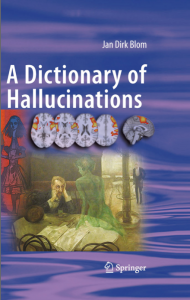 History is full of reports of visionaries, prophets, and other figures who derived their insights from what we would now classify as hallucinations. As these reports testify, individuals who knew how to deploy them convincingly for some noble cause were often rewarded with a high social status.
History is full of reports of visionaries, prophets, and other figures who derived their insights from what we would now classify as hallucinations. As these reports testify, individuals who knew how to deploy them convincingly for some noble cause were often rewarded with a high social status.
Thus one might hold that hallucinations have constituted a legitimate source of information and inspiration in most – if not all – ancient cultures. On the other hand, for other groups of individuals they have always constituted a significant source of suffering. But even in these cases, the concept of neurological pathology seldom seemed to come to mind. Those who needed help were more likely to be taken to a priest than to a physician. According to Zilboorg and Henry, for thousands of years it was unthinkable that doctors, with their earthly methods, would some day involve themselves in matters ‘pertaining to the spirit’. This may well have been the fundamental reason why medicine became involved in the study of hallucinations so late in its developmental history.
‘A dictionary of hallucinations’ takes us on a journey, through the rise of scientific thinking and the simultaneous process of secularization, which brought about a shift in the general attitude towards hallucinations. Their otherworldly origin was no longer taken for granted, and in 1813 John Ferriar became the first person to write about hallucinations from a completely physiological point of view. I spent a few hours reading through this book and marveling at the vast accounts of hallucinations and their etiologies. It is a very interesting read with very unique cases that I have never seen in any Neurology text. Although you may never encounter these on your ward rounds I think they provide unique insight into the mind and also pose some very thought-provoking metaphysical questions.
For example, Alice in Wonderland syndrome refers to the protagonist in the book Alice’s Adventures in Wonderland by Lewis Carroll (1832–1898) whose experiences are reminiscent of symptoms such as micropsia (objects appear smaller than normal), macropsia (Objects appear larger than normal), macrosomatognosia (Macrosomatognosia refers to a disorder of the body image in which the patient perceives a part or parts of his body as disproportionately large). I would advise anyone who is interested in Neurology or metaphysics to take a read of this book.




